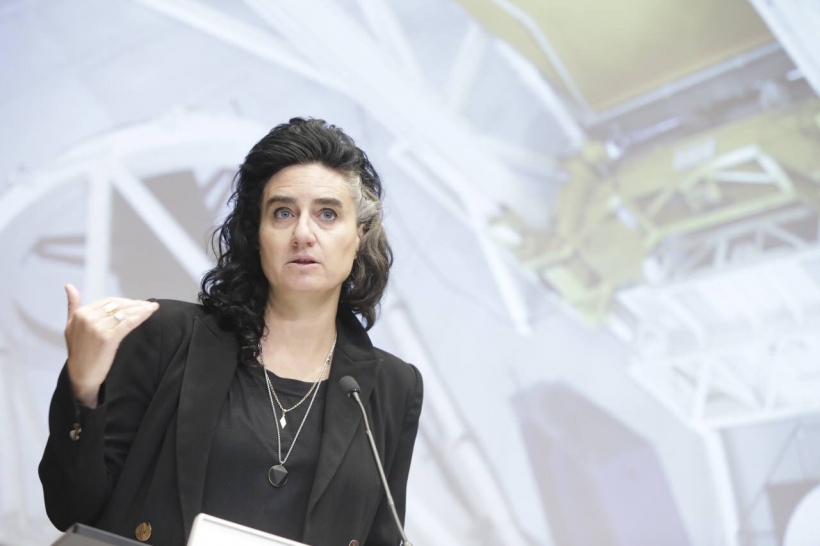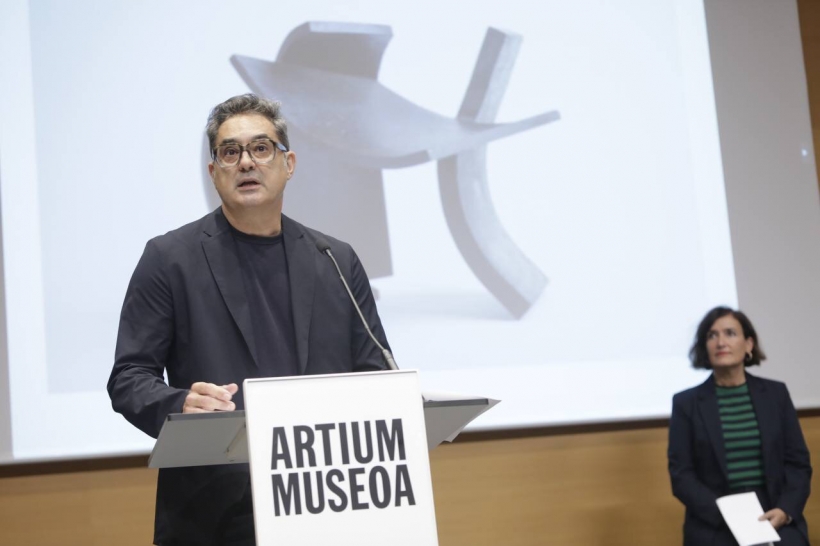Shanghai Biennale presents works by Itziar Barrio and Jorge Oteiza as part of the Etxepare Basque Institute´s ZABAL programme
2023/10/25
Euskara. Kultura. Mundura.
Several works by Basque artists Jorge Oteiza and Itziar Barrio will on display at the 14th Shanghai Biennale, held from 9 November to 31 March 2024, as a result of the ZABAL programme.
Last July the biennial´s curator, Anton Vidokle, visited the Basque Country, where he visited museums, artists´ studios and other art venues to gain insight into the Basque art landscape, invited by the Etxepare Basque Institute. This initiative, aimed at promoting Basque creativity worldwide, has made it possible for works by Basque artists to be showcased in Shanghai.
Titled “Cosmos Cinema,” the 14th Shanghai Biennale will offer visitors a spacetime in which to reflect on the operations of the universe and our place within it. ‘Cosmos Cinema’ will include works from the early 20th century to the present day by more than 80 artists from around the world. Besides being China´s first international biennial of contemporary art, the Shanghai Biennale is the country´s most established and influential biennale and one of the most important art events in Asia.
‘Cosmos Cinema’ proposes that contemplations of the cosmos – ancient and modern – might help counteract the sense of alienation that is endemic to our time in history: alienation from each other, from nature, and even from time itself. As no part of our world can be separated from the effects of the sun, the moon, and the heavenly bodies, the 14th Shanghai Biennale will suggest that seeking to understand the cosmos might encourage more complex ways of thinking about the increasingly entangled challenges confronting the world today.
The biennial´s structure will be orchestrated based on a montage principle, conceiving the entire exhibition as an extended film that contemplates the cosmic essence of cinema itself. Vidokle’s curatorial vision extends beyond the science fiction narratives of transboundary space and space travel.
The work of both Itziar Barrio and Jorge Oteiza is situated within this very concept. Barrio presents a video installation, a combination of documentary and speculative fiction to expose the human construction of the astronomical image and scientific knowledge, while Oteiza´s pieces explore emptiness, space and metaphysics.
Itziar Barrio’s video exhibition
Basque multimedia artist residing in New York (USA), Itziar Barrio, will present her video installation “A Demon that Slips into Your Telescopes while You’re Dead Tired and Blocks the Light” (2020) at the Shanghai Biennale. This video-essay combines documentary elements with speculative fiction to reveal how humans construct astronomical images and scientific knowledge.
This work addresses the horizontality between human and non-human factors (astronomical phenomena, telescopes, data, scientists). The video explores how those who work in science and technology impact our way of understanding and inhabiting the world, revealing the social constructs and forces of power that shape fields of “objective” knowledge.

The project is part of ‘Material’, a trilogy that Itziar Barrio created as a member of the New Museum’s incubator NEW INC in New York. ‘Material´ looks at the intersection between technology, work, identity and matter, and involves collaboration with different experts across various disciplines (astronomy, science, anthropology, engineering, robotics...). Barrio´s work explores how identity, work, class, gender and technology, among others, are the subtext of social negotiations.
Five pieces by Jorge Oteiza
The Shanghai Biennale will also show five works by Jorge Oteiza (1908-2003) on the 20th anniversary of the sculptor’s death. The selection, which has already departed from the Jorge Oteiza Museum Foundation in Altzuza to Shanghai, consists of three sculptures and two collages. In the 1950s, Oteiza carried out a series of experiments in abstract art in which he explored the themes of emptiness, space and metaphysics, which made up the core of his contribution to sculpture.
Two of the works, identified as ‘Cajas en piedra’ (Boxes in Stone, 1958), are sculptures carved in white marble inlaid with resin. These pieces are part of a series that reflects Oteiza´s experimental desire to represent the positive and negative parts of the same volume by including black and white elements.

The third sculpture by Oteiza on show in Shanghai is ‘Rotación espacial con la unidad Malévich abierta / Homenaje a Malévich’ (1957), a steel sculpture with the letters "TZA" inscribed on the back. The sculpture represents Oteiza´s aspiration for spatial fluidity in his sculptural work. The forms are rotated to achieve dynamism, aiming for complete spatial activation. This last sculpture is part of the 28-sculpture series that Jorge Oteiza presented at the 4th São Paulo Biennial in 1957 as part of his experimental approach, which was centred on the idea of spatial disoccupation.
The two collages in charcoal paper on paper, created by the artist from Orio in 1958, will also be on display in Shanghai. These works symbolize Oteiza´s intent to explore how geometric solids function in space by suspending various elements on the plane.
Other ZABAL successes
Through this project, initiated in 2019, different collaboration opportunities have been created between Basque creators and various international art programmers. ZABAL ZABAL has already yielded positive results in the global promotion of Basque creative endeavours. Consonni, an independent publishing house and cultural space in Bilbao, participated in June 2022 in the international exhibition Documenta Fifteen, inaugurated in Kassel, Germany, and June Crespo exhibited her work at the 59th Venice Biennale (Biennale Arte 2022).
The ZABAL programme has recently achieved another significant milestone this year with the painting by Juan van der Hamen ‘Retrato de Doña Catalina de Erauso, la Monja Alférez’ taking part in the São Paulo Biennial. Part of the Kutxa Fundazioa collection, the portrait of the nun and soldier Catalina de Erauso from San Sebastian, can be seen at the 35th edition of the São Paulo Biennial (Choreographies of the impossible) until 10 December.
To carry out the ZABAL programme, the Institute receives technical support from Artingenium, specialising in the management of projects connected to both local and international contemporary art.


